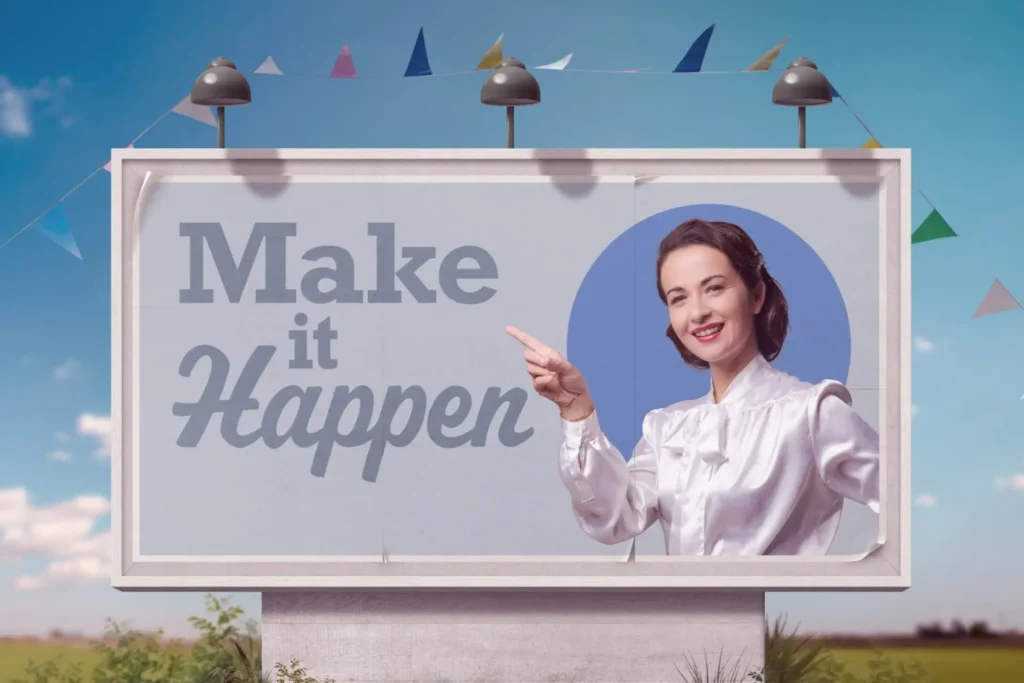The primary goal of advertising is usually understood as selling goods and services, or driving awareness of your business. To this end, there are powerful adtech tools available that can reach hyperspecific audiences and provide nudges at the right time to drive consumers to make purchases or keep a brand top of mind when they go to make the final buy.
However, there is another use of this technology: to change individual behavior for the purposes of public health, political engagement, proenvironmental action—in other words, for societal benefit.
This is often known as behavior change marketing, and it’s a tool that nonprofits, government agencies, and purpose-driven brands tap into to reach their goals. In this article, we will explore some strategies that behavior change firms can use to make a difference in their communities, whether providing awareness of where to drop off prescription drugs safely, informing individuals about mental health resources, or nudging people to recycle.
- Human behavior can be understood and influenced through psychological theories like:
- The Emotional Flow theory: which states that messages are more effective when they shift people’s emotions over the course of the message;
- Social proof: the theory that in uncertain circumstances, people will look toward others around them to determine how to act
- Personalized marketing messages resonate better with individuals, leading to higher engagement.
- Building community and leveraging user-generated content can strengthen trust and efficacy.
- Data analytics and A/B testing are crucial for optimizing behavior change strategies.
- Gamification can make marketing more engaging and encourage desired behaviors.
One: Understand Psychology in Behavior Change Marketing
Understanding psychology is essential if you want to actually change someone’s behavior through marketing. Rather than increasing the frequency of your message, it’s about understanding what makes people tick.
What is the role of Psychology in Behavior Change Marketing?
Psychology is the study of the human mind. There are lots of highly-studied, evidence-backed theories that change marketers can tap into if they want to give people a nudge toward a desired action.
Two of the most salient and easy-to-incorporate theories are the Emotional Flow theory and Social Proof theory.
Emotional Flow
The Emotional Flow theory is the idea that shifting the emotional state of a message through makes the message more effective. For example, first showing a video of a beautiful landscape, then shifting to a landfill, can communicate to individuals the dangers and consequences of pollution, and make them want to take more proenvironmental actions such as recycling.
Social Proof
People often look to others for cues on how to behave. This is social proof in action. If you see a restaurant with a long line, you’re more likely to think it’s good. Social proof can take many forms, like testimonials, reviews, and case studies. It can also include showing the types of actions you want your audience to take by using peer influencers or simply speaking to social norms. Showing that other people are using and loving your product can be a powerful way to influence potential customers.
Social proof works because people want to fit in and make the right choices. If they see others doing something that is described as the correct choice, they’re more likely to take that action too.
Two: How to Create Compelling Messaging for Behavior Change
Storytelling as a Tool
Storytelling is powerful. Stories are how we learn societal values and norms when we’re kids. When you’re trying to change behavior, a good story can be way more effective than just throwing facts at people. A story can create an emotional connection, make the information memorable, and show how the change can positively impact someone’s life.
A well-crafted narrative can bypass resistance and tap into the audience’s values and aspirations, making the desired behavior feel natural and desirable.
Emotional Appeals in Advertising
Ads that make you feel something tend to stick with you. That’s because emotions drive decisions. Fear, joy, sadness, hope: all of these can be used to motivate people. But you must be careful; it’s easy to cross the line and come off as manipulative or insincere. The key is to understand your audience and what resonates with them. For example, ads promoting sunscreen often use the fear of skin cancer, but they also show the joy of being outdoors and active. It’s a balance. Understanding what motivates people is key to crafting effective emotional appeals.
Clarity and Simplicity in Communication
If your message is confusing, people will tune out. Plain and simple. No one has time to decipher complicated jargon or long, winding sentences. Get to the point. Use clear, concise language. Make it easy for people to understand what you want them to do and why they should do it. This is especially important when you’re dealing with behavior change, because people are already resistant to change. Don’t give them another reason to say no. Consider these points:
- Use short sentences and paragraphs.
- Avoid jargon and technical terms.
- Focus on the benefits of the change.
Here’s a simple example:
| Before | After |
| “Optimize your wellness journey today!” | “Start feeling better today!” |
| “Reduce your carbon footprint.” | “Help the planet. Recycle more.” |
It’s about making the message accessible and easy to grasp. Effective social marketing hinges on this principle.
Three: The Importance of Community in Behavior Change Marketing
Community plays a big role in how people change their habits. The people around us, and our social norms, have a large impact on the decisions and actions we take. When people have a community that makes them feel supported and understood, they’re more likely to stick with new behaviors. For example, trying to eat healthier is way easier when you have friends doing it with you.
Building Supportive Networks
Creating a network where people can share their experiences and support each other is key. It’s about more than just telling people what to do; it’s about creating a space where they feel safe to try, fail, and learn together. Online forums, local groups, or even just a buddy system can make a huge difference. These networks provide accountability and encouragement, which are both super important for lasting change. For example, a weight loss program that incorporates group meetings often sees better results than one that relies solely on individual effort. These supportive environments help people stay motivated and on track.
Create Partnerships with Influencers
Working with influencers can be a great way to reach a wider audience and build trust. Try to find someone who genuinely believes in what you’re promoting and can connect with their audience in an authentic way. People are more likely to listen to someone they see as relatable and trustworthy. A good influencer can share their own journey, answer questions, and provide support, making the whole process feel less intimidating and more achievable. This is especially true when promoting behavior change marketing.
Engaging with User-Generated Content
User-generated content (UGC) is a goldmine for behavior change marketing. When people share their own stories, tips, and experiences, it creates a sense of community and authenticity. It’s way more powerful than any ad campaign because it’s real people talking about real results. Encourage people to share their stories, photos, and videos. Feature this content on your website and social media channels. This not only builds trust but also provides social proof that your product or service works. Plus, it gives people a platform to connect with each other and support each other’s journeys.
Community is the secret ingredient that makes behavior change stick. It’s about creating a sense of belonging, providing support, and celebrating successes together. When people feel like they’re part of something bigger than themselves, they’re more likely to stay committed to their goals.
Four: Leverage Data for Effective Behavior Change
There are many data sources available to behavior change firms, and this data is essential for building an effective strategy based on actual audience demographics and psychographics. These are the most strategic areas where this data should be leveraged.
Optimize with A/B Testing
A/B testing is where you try out different versions of something to see which one works best. It could be a website, an email, or even an ad. You show version A to some people and version B to others, and then you see which one gets better results. It’s a simple way to make sure you’re not wasting your time on tactics that don’t work. Here’s a simple example:
| Version | Headline | Conversion Rate |
| A | “Protect Your Skin Today!” | 2.5% |
| B | “Daily Sunscreen: Your Skin Will Thank You” | 3.8% |
A/B testing is not just about finding the best version; it’s about learning why that version works. Understanding the ‘why’ helps you make even better decisions in the future.
Five: Measure Your Success in Behavior Change Initiatives
It’s all well and good to launch a behavior change campaign, but how do you know if it’s actually working? That’s where measuring success comes in. So how can you measure the success of your campaigns?
Key Performance Indicators
KPIs are your best friends when it comes to measuring success. These are the specific, measurable, achievable, relevant, and time-bound metrics that tell you whether you’re on track. Think about what you’re trying to achieve. Are you trying to increase sign-ups for a health promotion program? Reduce energy consumption? Increase the use of a new product? Your KPIs should directly reflect these goals.
Here are some examples of KPIs:
- Video Completion Rate: To demonstrate interest in the message
- Engagement Metrics: Likes, shares, comments, and other interactions with your campaign content.
- Conversion Rates: Percentage of users completing a specific action (e.g., signing up, making a purchase).
Feedback Loops and Iteration
Measuring success isn’t a one-time thing. It’s an ongoing process. You need to establish feedback loops to continuously monitor your progress and make adjustments as needed. This means regularly collecting data, analyzing it, and using the insights to refine your strategy.
First, launch a campaign, track the results, see what’s working and what’s not, and then tweak your approach accordingly. This iterative process is key to maximizing your impact.
Long-term Impact Assessment
It’s important to look beyond the immediate results and consider the long-term impact of your behavior change initiatives. Are people still engaging in the desired behavior months or even years after the campaign has ended? This requires ongoing monitoring and evaluation. Consider setting up systems to track behavior over time, such as surveys or data analysis. Understanding consumer behavior change is a long game, and measuring long-term impact is crucial for determining the true success of your efforts.
Here’s a simple table to illustrate the difference between short-term and long-term impact:
| Metric | Short-Term Impact | Long-Term Impact |
| Website Traffic | Spike in traffic during the campaign | Sustained increase in traffic over time |
| Social Shares | High number of shares in the first few weeks | Consistent sharing and engagement months later |
| Sales | Initial boost in sales | Continued sales growth and brand loyalty |
Six: Tap into Trends in Behavior Change Marketing
Artificial Intelligence and Automation
AI is set to revolutionize behavior change marketing. Imagine AI algorithms that can predict individual consumer behavior with incredible accuracy. This allows for hyper-personalized marketing campaigns that adapt in real-time based on a person’s actions and emotional state. Think of chatbots that not only answer questions but also subtly guide users toward desired behaviors, or automated systems that adjust pricing and incentives to maximize engagement. Data-driven trends will become even more critical as AI systems learn and optimize strategies.
Gamification Strategies
Gamification is all about making things fun. By adding game-like elements to marketing, like points, badges, and leaderboards, you can seriously boost engagement. This isn’t all fun and games, though. Gamification can drive consumer engagement and motivate people to complete tasks they might otherwise avoid. For example, a fitness app might give you points for every workout, turning exercise into a game.
Conclusion: The Path to Behavior Change
Behavior change marketing is all about understanding what makes people tick and about connecting with individuals on a deeper level. Whether it’s through clever reminders, making actions easier to complete through increasing awareness of solutions, or just knowing when to reach out, the key is to keep it simple, actionable, and fun. So, let’s keep experimenting and learning—because that’s how we’ll truly make a difference.
Want to build your own behavior change campaign to create meaningful change in your community? Explore how Magnitude of Change uses behavioral insights, data-driven strategy, and cutting-edge technology to drive results. Drop us a line, and let’s see how we can work together!
Frequently Asked Questions
What is behavior change marketing?
Behavior change marketing is a strategy that aims to influence people’s habits and choices to encourage them to adopt new behaviors.
How does psychology work in behavior change marketing?
There are several psychological theories that change marketers can use to influence people’s actions, like the Emotional Flow theory or Social Proof theory.
What are some examples of gamification in marketing?
Gamification involves using game-like elements in marketing, such as rewards, challenges, or competitions, to engage individuals and encourage them to start or stop an action.
Why is personalization important in marketing?
Personalization makes marketing messages more relevant to each individual. When customers feel that a brand understands their needs, they are more likely to respond positively.
How can data improve behavior change marketing?
Data helps marketers understand consumer behavior better. By analyzing data, they can see what works, what doesn’t, and how to adjust their strategies for better results.
What role does community play in changing behavior?
Community support can help people stick to new habits. When individuals see others in their community making similar changes, it encourages them to do the same.





![Social Impact Marketing: How to Create and Measure Campaigns [Part 2]](https://www.magnitudeofchange.com/wp-content/uploads/2025/04/Social-Impact-Marketing-How-to-Create-and-Measure-Campaigns-Part-2-1024x683.webp)
![Social Impact Marketing: Strategies for Driving Change in 2025 [Part 1]](https://www.magnitudeofchange.com/wp-content/uploads/2025/04/AdobeStock_904525650-1024x576.jpeg)
